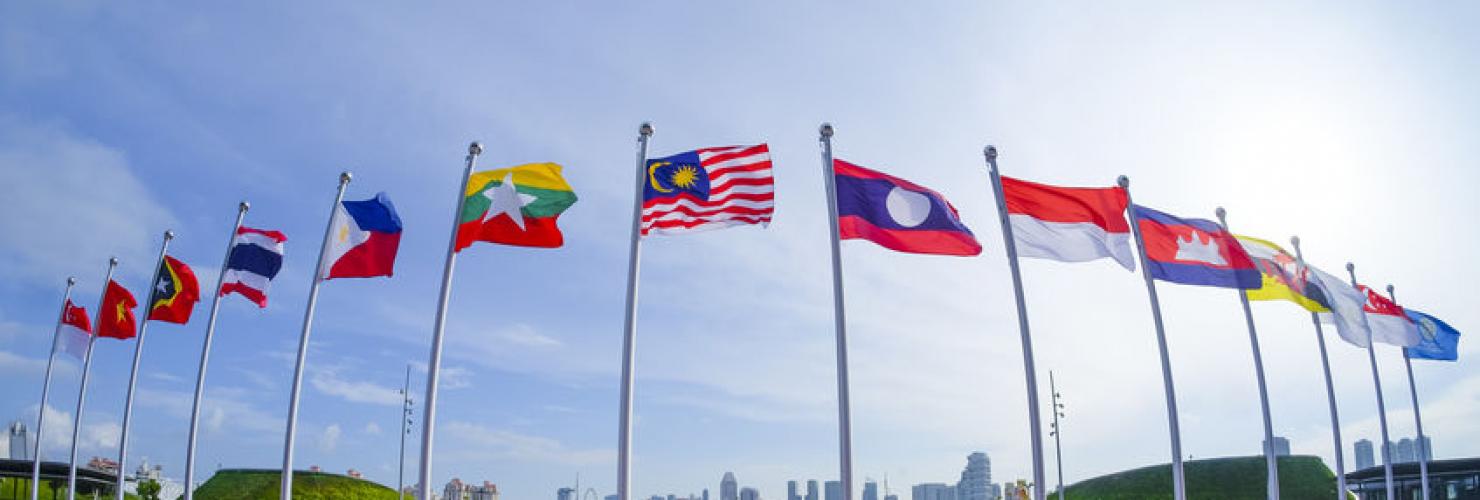

ASEAN’s elephant dance
Lacklustre collective action means Southeast Asia countries are failing to constrain the USA and China shaping the future of their region. Hanns W. Maull says European nations should take note.
Small and middle powers the world over are facing up to the fact that there are now two elephants in the room that is world politics. As the USA and China circle each other ever more warily, countries in regions as far apart as Europe and South America are anxiously trying not to get trampled underfoot. Should they stick closely to one of them, choosing sides? Or might they be able to corral the two elephants into some form of co-habitation through joint efforts based on number, not size?
Nowhere are these questions more urgent than in South East Asia, where ASEAN, the 10-member Association of Southeast Asian Nations, sees itself as the guardian of the regional order. Member states love that idea, but experience has shown that one thing they will not allow is ASEAN to adopt a common strategy. As a result, countries as big as Indonesia or the Philippines and as small as Singapore or Brunei have to look out for themselves as the superpower elephants dance.
A consensual agreement to disagree
Logic suggests that these countries join forces - working together might even allow the elephants to be corralled. But what prevents the ASEAN nations from doing so is the age-old price of concerted action, the erosion of national sovereignty through its pooling. The so-called ASEAN Way is a consensual agreement to disagree. As a result, ASEAN nations lack power and purpose, a weakness that crucially also hinders each of them conclusively choosing a side – what if it’s the losing one?
Under these circumstances, ASEAN countries see the contortions of hedging their bets as eminently sensible, much like non-aligned regional powers like Australia, New Zealand, South Korea, the South Pacific island states and even Taiwan. Indeed, traditional Realpolitik wisdom would tell them to do exactly that: play the two great powers off against each other to maximize your own advantage; always keep your bets open, always make sure that you could if needed bet differently in the future.
But the course ASEAN countries are steering between America and China also reflects domestic currents induced by logic that has little to do with the calculations of world affairs. Domestic and cross-border influences and interests, and the personalities of leaders also influence political decisions. Next to Realpolitik, commercial interests and financial temptations, nationalist sentiments and even racial prejudices shape how these countries are navigating between the two great powers.
Different trajectories
Consider, by way of example, the different trajectories of Singapore, Malaysia and Cambodia in recent years. Singapore’s policies have been remarkably consistent and close to what Realpolitik would suggest, including its efforts (so far futile) to turn ASEAN into a more effective organization. Singapore’s domestic politics gives the government the support and legitimacy it needs to pursue a foreign policy that tries to maximize the returns for the (collective) national interest of the country.
On the other hand, there is Malaysia. Its previous government pursued a pro-China policy that helped fuel to a domestic backlash and UNMO, the traditional ruling party, being driven from power. The new government then sharply veered away from the previous China policy, renegotiating major infrastructure contracts and distancing itself from China. Recently, however, Prime Minister Mahathir Mohamad changed course again, signalling a renewed interest in close cooperation with Beijing.
And there is Cambodia. Prime Minister Hun Sen appears to be siding more firmly with China. He did Beijing’s bidding by blocking a communique critical of China’s assertiveness in the South China Sea at the 2012 ASEAN Regional Forum in Phnom Penh, and may even be willing to provide land for military facilities. Yet even he remains keen to suggest he still can hedge his bets. Hun Sen has denied reports about a green light for a Chinese naval base – perhaps the US and Japan helped him get there.
Such contortions suggest two things. First, small and middle powers in East Asia are unlikely to become pawns of the great powers - their fierce nationalism and external support will prevent that. But, second, they will not be able to shape their regional environment and constrain great-power activity within it. Without meaningful collective action, ASEAN’s self-image as the guardian of Southeast Asian security will likely remain a pipe dream. European nations need to take note.
